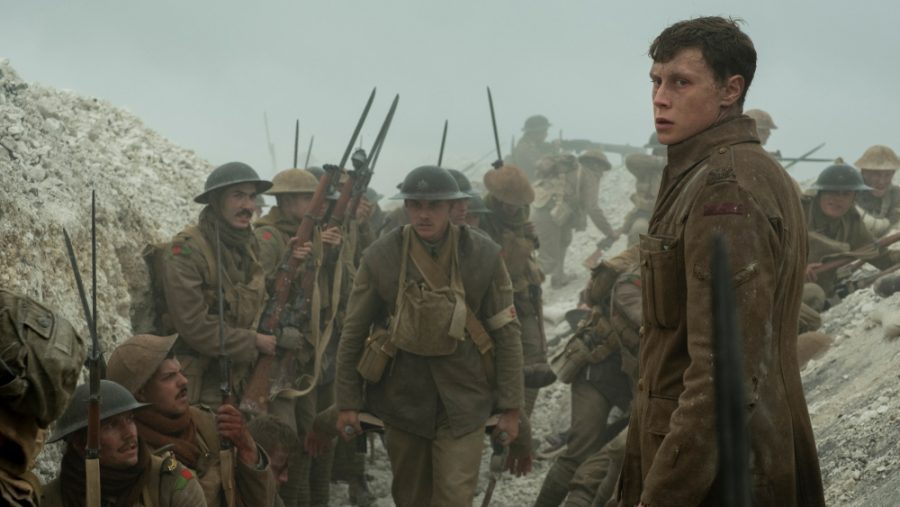“1917” Somberly Marches To Victory
★★★★☆
Why does Hollywood largely ignore World War One as viable filmmaking material? In rankings of the greatest war films, very few are set during The War to End All Wars; most directors are drawn to either World War Two, the Vietnam War or contemporary Middle Eastern conflicts. Perhaps WWI is perceived as a hard sell?
1917, Sam Mendes’ first non-James Bond film in almost a decade, underscores the falsehood of that notion. What 1917 gets – just like Paths of Glory and All Quiet on the Western Front before it – is that the Great War is fascinating and full of substance precisely for its lack of substance. What was the point of it all? Did millions die purely to swell national pride? Why were the Allies and Central Powers fighting?
Mendes only gives us a small window into the conflict. Two soldiers (played by Dean-Charles Chapman and George MacKay) embark on a perilous mission to relay critical executive commands. The entire film is filtered through their points of view. Too hurried to offer any sort of commentary on the fighting itself, World War One’s depravity is only implied. 1917 refuses to justify its assail of carnage because there is no justification. The war is as portrayed: loud, violent, and pointless.
1917 easily rises to become one of the best looking war films in recent years. Mendes opts for the entire film to appear as if it were completed in one continuous take. This thickens 1917 with an extra coat of reality. Other films have tried the “one shot” gimmick before, though 1917 may be the most audacious attempt to date. I cannot fathom how much meticulous blocking and rehearsal must’ve gone into the finished product.
Chapman and MacKay are good, but this is certainly a film in which the visuals are the main event, the actors being mere accessories. Nonetheless, I found both thoroughly compelling. Other actors are indeed present, but for most of 1917, we are stuck squarely with Chapman and MacKay.
The effects and camera work are the film’s major attraction; the screenplay is merely adequate. In comparison to Mendes’ mind-melting, complex direction, 1917’s script may appear somewhat lackluster.
Regardless, cinema is a visual medium, and as a feat of optical storytelling and engagement, 1917 resoundingly delivers. I would strongly recommend it.
Ratings Key:
★ – Bad (e.g., Godzilla ‘98, Pixels, Star Wars: Episode I – The Phantom Menace, Justice League)
★★ – Mediocre (e.g., Incredibles 2, Watchmen, Alice in Wonderland, Jumanji: Welcome To The Jungle)
★★★ – Good (e.g., Creed II, Batman, Star Wars: The Force Awakens, Pretty In Pink, Ace Ventura: Pet Detective)
★★★★ – Great (e.g., Jurassic Park, The Empire Strikes Back, Guardians of the Galaxy, The Social Network)
★★★★★ – Amazing (e.g., Dr. Strangelove, The Terminator, The Dark Knight, Back to the Future, Skyfall)

